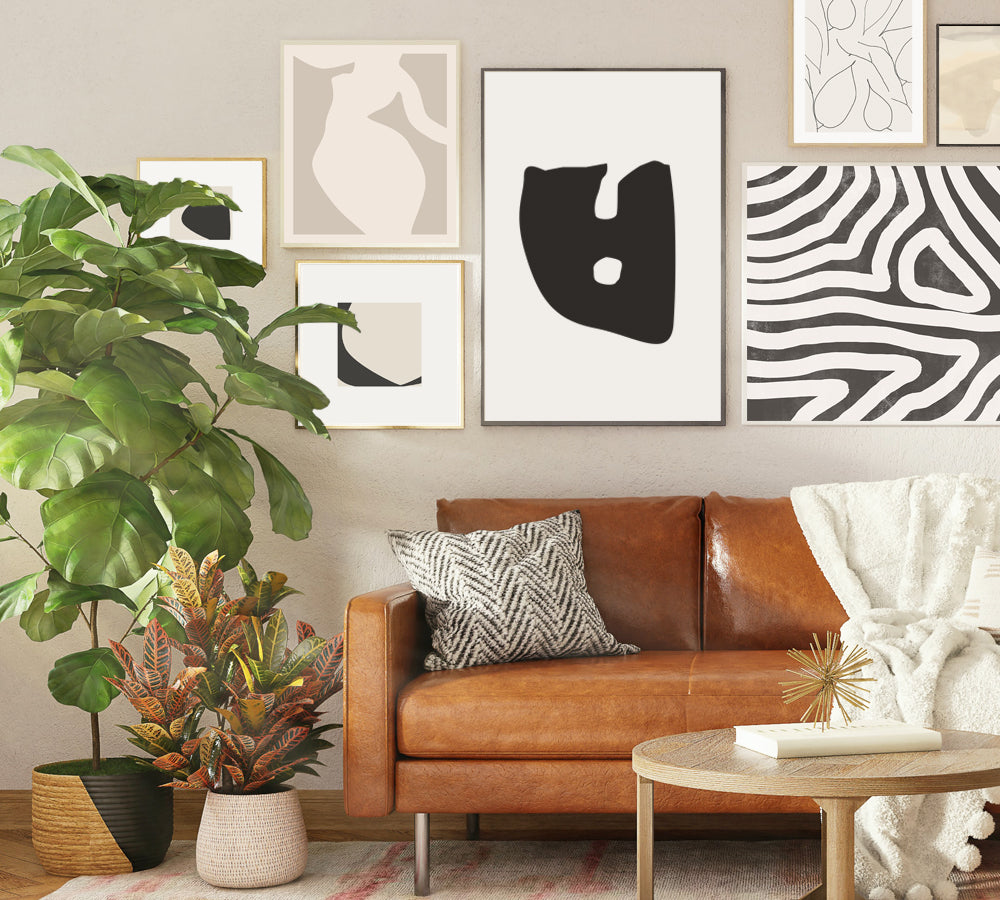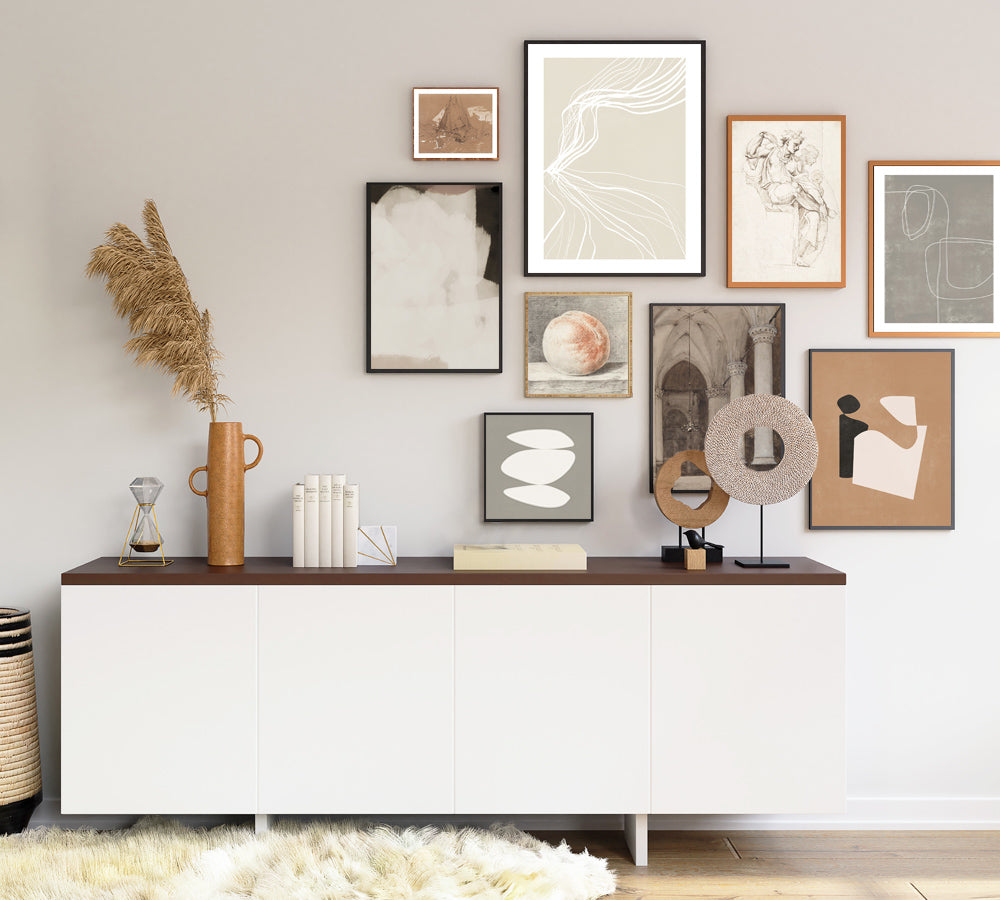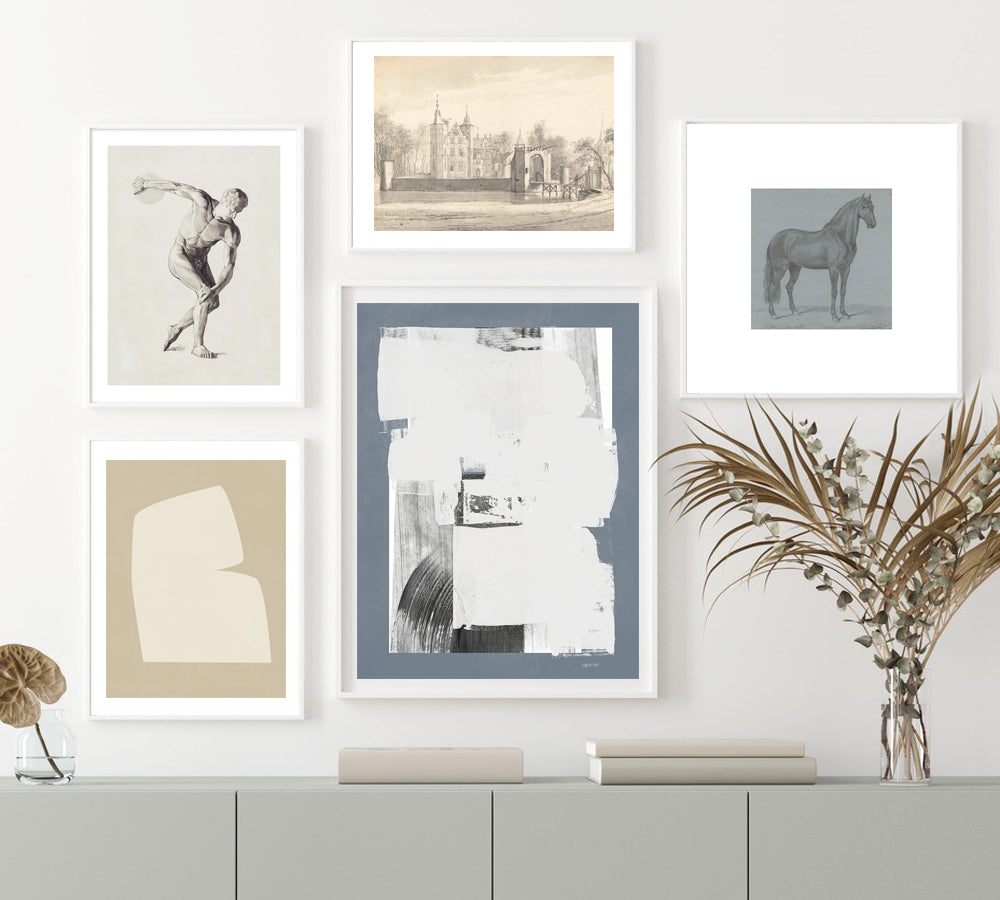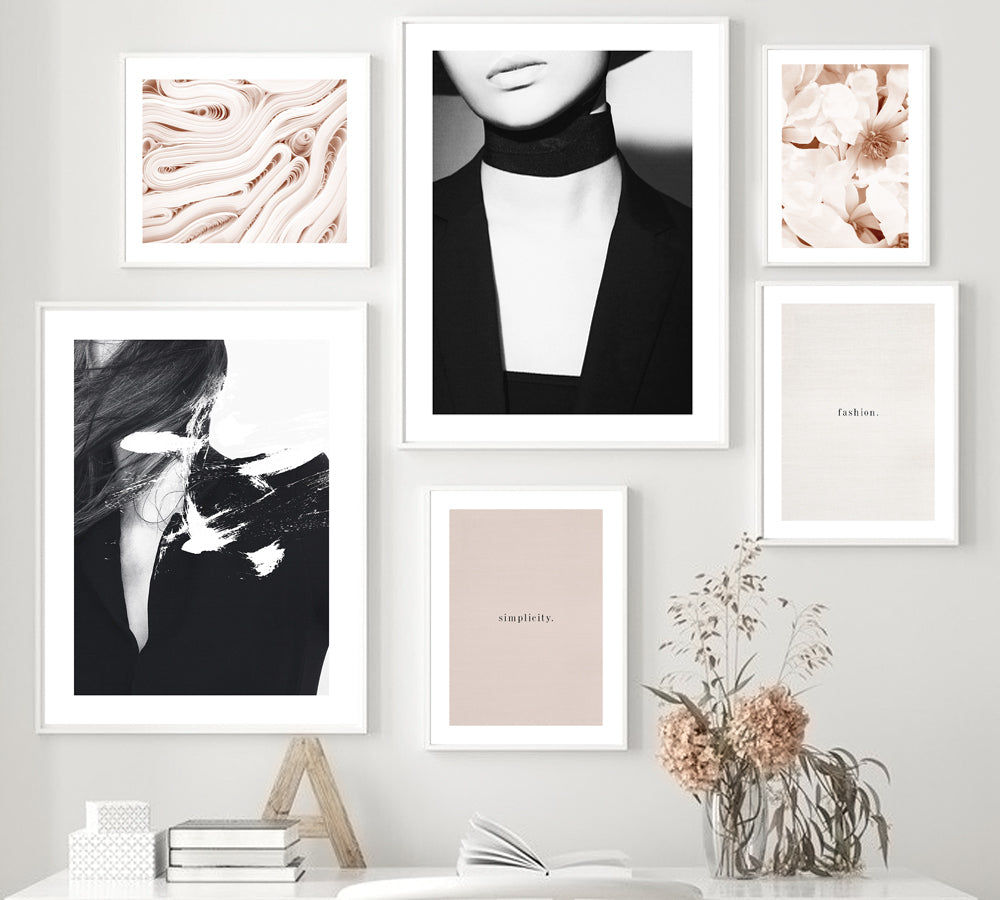Interior Designer Tips on Gallery Walls
What makes a gallery wall a success
First of all, let’s start with ‘what are gallery walls?’ We have all come across them; we most likely have one at home. Like furniture, carpets, flooring, they are a staple in interior décor. You already know what I am talking about: any wall where you’ve hung frames of artwork or even photographs has become a gallery wall. Let us find out what makes one gallery wall beautifully stand out and another fade unnoticed in a house.
There are a number of aspects that need to be considered when designing a gallery wall for your home. Divided between primary aspects (theme, colors and intent - but that is expertise of an interior designer, and a discussion for another time) and secondary aspects (which are mostly refined personal touches.) We will talk about these secondary aspect and help you refine them to make your home a more beautiful place.
Once you understand the requirements for each secondary aspect, they will be a same recipe can also be used for gallery walls in other places, such as your workplace (yes, a little bit of art at work is more than welcome!) and in hotels. Maybe even in waiting room somewhere; we know we can’t all pick that last magazine at the same time anyway. So, an appealing gallery wall can provide a much needed visual adventure.
The aspects are: density of pieces, frame variety, distance between pieces, and eye-level. Notice I am not talking about neither colors nor theme, and you will understand why. We will break down each one of them.

1. Density of Pieces
A gallery wall is often the focal point in a room. This is where the eyes wander to because the mind picked up a multitude of details. Our curiosity will instinctively drive us to the gallery wall. How fast does a gallery wall catch our attention depends on the density of the design.
We make the mistake in thinking that fewer pieces will allow focus on the one or two of our prized art piece, but when surrounded by empty walls or interrupted by furniture, we lose the interest in the art piece more readily. I know of people who walked into a room with one piece and walked out without even noticing there was a painting on a wall. Make that little experiment yourself - wherever you go, make a mental note of the art pieces on walls and notice how you’re drawn to denser designs.

2. Frame Variety
While the choice of frames can usually be personal, a lot of people acquire their art already framed. As a result, we have little or no choice as to what frames we like the most, because that decision was already made by the shops based on availability and cost. This is where we end up with each art having almost their unique frame.
This is exactly what we want!
Frame variety is an important aspect of décor. As a rule, the more varied your frames, the more drama to the gallery wall. And yes, this is a good thing. You want to avoid the ‘store look.’ You also want to show that you didn’t buy all your art in one trip.

Metal, wood or even plastic (ahem, recycled plastic) are all beautiful options. The second variety comes in their width, thickness, intricate detail (or lack thereof.) This is where, if you are lucky to find a good framer, you add personal touches to the frames.
So, don’t be afraid to make picking frames a non-linear process. Go wild.
3. Distance between Pieces
While keeping density as a measure, we now introduce offsets - the distance between the art. Art comes in all sizes and shapes (but really, landscape or portrait, unless you are breaking the mold with an oval piece.)
How do you keep track of how or how wide is the distance? A general rule of thumb (yes, pun - you’ll see) is to measure the size of the adjoining frames with your thumb and pick the distance between frames to be not less than the wider frame.

Density of art is not going to give you a cluttered and heavy look on your wall. The distance between frames will. Too close a distance and the play of shadows make the adjoining art one. With a small gap, you will be playing against the shadows instead of letting the shadows give depth to your gallery wall.
With the above rule of thumb, you will avoid clutter and allow your art to breathe with a well spaced design, and stand out against an otherwise unimpressive wall.

4. Eye-level
The importance of this aspect to be considered resides in the human comfort. At natural standing eye-level, the mind is rested and the eyes are most alert.This is why you want the focus of your gallery wall to be at that exact height. How do we determine what is that ‘eye-level.’ Without going deep into ergonomics (which is the study of designing and arranging things for human comfort), a simple principle is to have the top of your highest placed art not above your vertically extended arm.
Anything above that height is uncomfortable to look at for a long period time.
The exception to this principle will be in places where walls are unusually high (for instance in hotels, conference rooms, etc.) There, you will notice that the interior designer would have divided the height of the wall in three and use only the middle part for art.
As for how high above the ground you’d want your art to be, it’s a relatively easy to decide. You don’t want anything below hip level. Nobody wants to squat to admire art. You also avoid having your pet making nose imprints on your art!
These four above aspects are easily implemented and if you leave the stress of colors, theme and intent to the interior designer, you are guaranteed to have a successful and impactful gallery wall. To start on your gallery walls, we have a lot on offer here and we also are available for complete gallery wall/interior décor design.
Take the opportunity to post your gallery walls to our Instagram and Twitter, and we will happily feature your designs.




